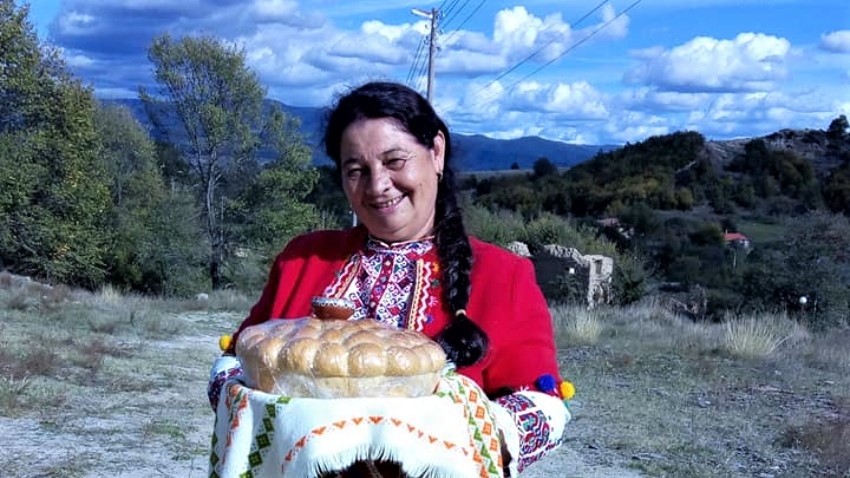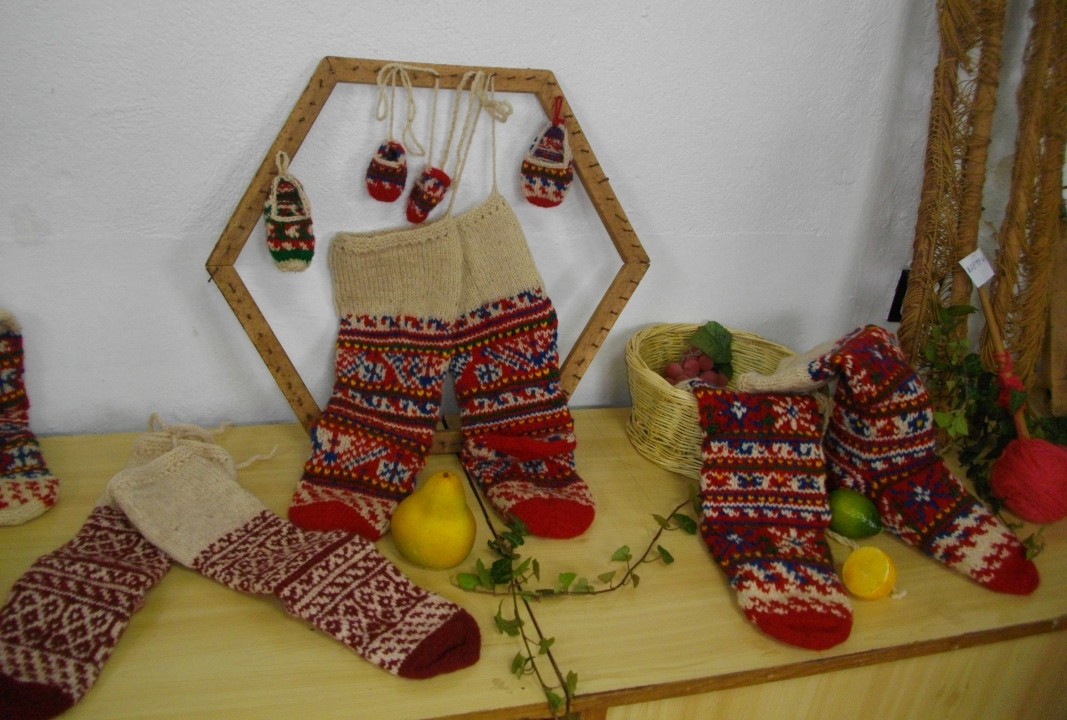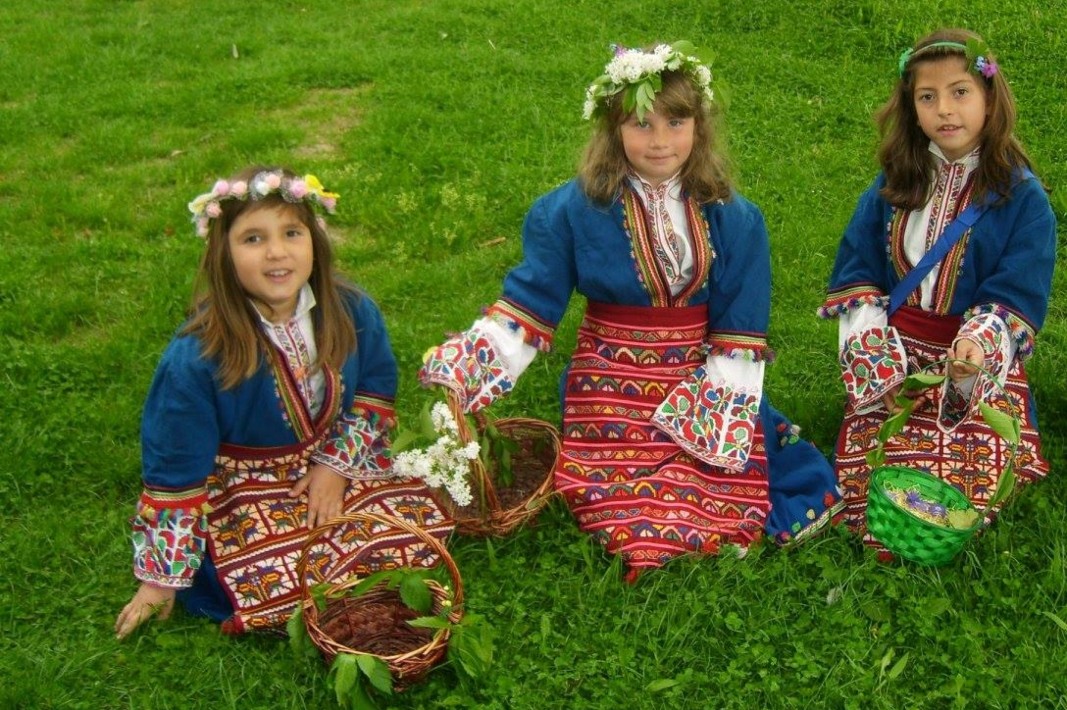 4
4
In the small village of Banichan, located in the Pirin Mountain in southwestern Bulgaria, several centuries-old traditions are still alive today, which convey information about the local life, worldviews, beliefs and human relationships. One of them is the knitting of colourful woolen socks, a tradition preserved to this day in its authentic form.
"They are a letter from our ancestors, which we must read with our own eyes and accept with our hearts in order to preserve and perpetuate the strength of our spirit, the indelible family memory and the originality of local women," says Rumyana Dzhibova, secretary of the village community centre. "Even today, people still believe that if you give a sock to a loved one, you give him a blessing, warmth, a symbol of the hearth."

What distinguishes the socks made in the village of Banichan is the picturesque combination of colours and ornaments. There are nine designs as each has its own name, and the colours used for the unique patterns - white, red, green, blue and yellow - have their meaning to prevent evil. Some of the oldest Bulgarian motifs are preserved in the knitted socks of the people of Banichan and this huge wealth of colours and patterns cannot be found anywhere else in Bulgaria.
"They are a prayer to all natural forces to help the owner of the socks to be healthy, to have prosperity and longevity”, adds Rumyana Dzhibova. "Each of them can tell you about our past, our beautiful nature, they seem to be alive and full of emotion."

The socks in Banichan were a sign of the social status of the owner, of dexterity, wealth, and marital status. The midwife who helped in the childbirth was supposed to knit a pair of socks for the new-born baby. Socks were also a mandatory element of each wedding, and today everyone can see them on display in the Sock Museum in the village.
There are socks from the village of Banichan in more than 25 countries on 5 continents, and in 2018 the Banichan sock travelled as far as the British Royal Court as a gift for the wedding of Harry and Megan. Two months later, the masters received a letter of gratitude from Queen Elizabeth II.
The village is famous not only for its socks, but also for its authentic local costumes. Its brightest element is the apron, and the 14 models of costumes are uploaded in the electronic library of the Bulgarian polar base on Livingston Island in Antarctica.

"These symbols and motifs can be seen only here, in Banichan. Colourful and beautiful, the aprons are worn not only for beauty but also for protection, and the colours, symbols and motifs are found only in our village. They are embroidered with a cross stitch, as the cross is a universal symbol of protection, and the very figures on the apron - from the simplest geometric elements to complex combinations - have a protective character."

Rumyana Dzhibova and Tanya Kacharova also made an embroidered map of the village. It took them 6 months to make the panel sized 70x100 cm. All the embroidery patterns typical for the national costume of women from Banichan are embroidered on it - over 23 symbols and 23 embroideries. For the 900 thousand stitches they made they needed 5 thousand metres of natural cotton threads, and the interesting thing is that this is exactly the distance from the village of Banichan to the nearby municipal town of Gotse Delchev.

"When people look at this map, they seem to be transported to a more beautiful world - a world of harmony, kindness, understanding, sublimity”, says Rumyana Dzhibova. “Our past seems to come to life with this unique map, it seems to be able to speak and reveal the spirit of our ancestors. On it we have depicted the numerous churches we have per capita, the two mineral springs, the two rivers, the white and red onions that are grown here, and the stork nests. These are the other symbols of Banichan that cannot be seen anywhere else. "
English version Rositsa Petkova
Photos: Facebook/Izgrev community center and private libraryFans of Bulgarian folklore are getting together in the village of Ribaritsa near Teteven on 20 and 21 July for the 3 rd national festival and the 16 th edition of the festival of folklore of national customs and authentic traditional costumes in a..
Nearly 340 participants from countries on different continents will take the stage at the Summer Theatre in Marno Pole Park in Veliko Tarnovo to present the their folklore traditions. The start is today, 20 July, when the traditional..
Products made of wool inspire the feeling of inner comfort and warmth in the visitors of the Plovdiv Regional Ethnographic Museum. The exhibition "Bulgarian felts - a message from antiquity" presents an ancient craft, which is..

+359 2 9336 661
